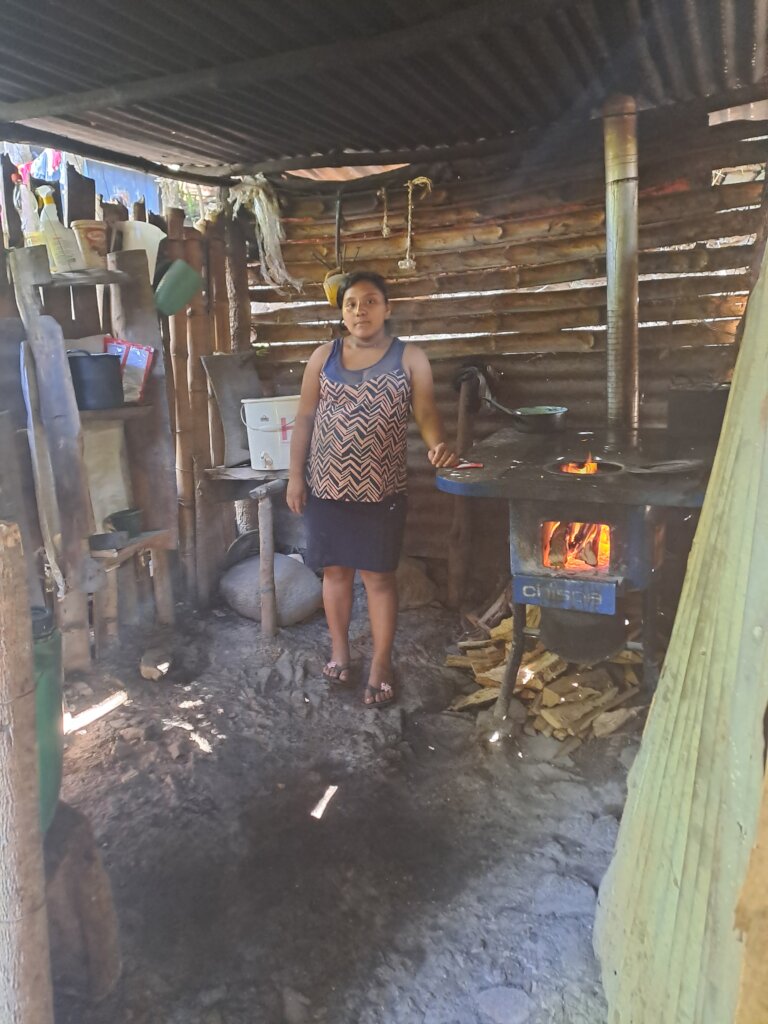By Jennifer Jones | Vice President of Advancement
The Safe, Energy Efficient Cookstoves Program in Guatemala was launched with the goal of addressing significant health and environmental concerns arising from traditional cooking methods of using an open flame fire and abundance of wood. In rural Guatemala, many households continue to use open fires or inefficient stoves that rely on biomass fuels such as wood. These practices contribute to indoor air pollution, health problems, and environmental degradation. The Safe Cookstove Program aims to mitigate these issues by promoting the adoption of cleaner, more efficient stoves that reduce harmful emissions, improve health, and protect the environment.
This report outlines the program’s objectives, activities, achievements, challenges, and recommendations for future efforts to scale and sustain the initiative.
1. Background and Rationale
1.1 The Need for Safe Cookstoves
In rural and indigenous communities across Guatemala, the use of open fires and traditional stoves has led to various negative impacts:
Health Risks: Household air pollution is a major cause of respiratory illnesses, especially for women and children who spend the most time near the cooking fire. It is estimated by the World Health Organization that nearly 4,000 deaths annually in Guatemala are caused by illnesses related to indoor air pollution.
Environmental Impact: The reliance on firewood and other biomass for cooking results in significant deforestation, contributing to the loss of biodiversity and exacerbating climate change.
Economic Burden: The inefficient burning of wood and biomass requires households to collect large amounts of fuel, often leading to time spent gathering firewood, which could be better spent on income-generating activities.
1.2 Objectives of the Safe Cookstove Program
The program sought to achieve the following objectives:
Improve Health: Reduce indoor air pollution by replacing traditional stoves with cleaner cookstoves, thus lowering the incidence of respiratory diseases and other health issues.
Promote Environmental Sustainability: Decrease the use of firewood, reduce deforestation, and contribute to climate change mitigation by promoting cleaner cooking technologies.
Increase Economic Efficiency: Lower fuel consumption, reduce the time spent gathering firewood, and reduce household expenditure on fuel.
Strengthen Community Capacity: Train local technicians and create local awareness on the benefits of safe cooking technologies.
2. Program Activities
2.1 Cookstove Distribution
A key activity of the program was the distribution of improved cookstoves in rural communities. These stoves are designed to be more fuel-efficient and produce less smoke compared to traditional stoves. They have chimneys to pipe the smoke out of the homes so families do not breathe the unsafe air. The stoves were distributed by HRI with the assistance of local community leaders who helped identify beneficiaries.
2.2 Training and Education
The program focused on community education, training local beneficiaries on the proper use, maintenance, and benefits of the improved cookstoves. Local technicians were hired for stove installation, maintenance, and repairs, ensuring long-term sustainability.
2.3 Monitoring and Evaluation
Continuous monitoring and evaluation were conducted throughout the program to assess the stove’s performance, user satisfaction, and health impacts. Surveys and interviews with beneficiaries provided feedback on the functionality of the stoves and any challenges faced. Data was also collected on health outcomes and fuel consumption to measure the effectiveness of the program.
3. Achievements
3.1 Health Improvements
Following the installation of improved cookstoves, participants reported a significant reduction in respiratory illnesses such as asthma and bronchitis. Women, in particular, noted a reduction in eye irritation and coughing. The cleaner combustion process in these stoves has resulted in a noticeable decrease in harmful particulate matter in households.
3.2 Environmental Benefits
The improved stoves have led to a significant reduction in the amount of firewood consumed, contributing to the preservation of local forests and the reduction of greenhouse gas emissions. It is estimated that each stove has led to a reduction of several tons of CO2 emissions annually.
3.3 Economic Benefits
The program has also brought economic benefits to households. Many participants reduced spending on fuel and decreased time spent collecting firewood. In some cases, women were able to dedicate more time to income-generating activities, contributing to improved livelihoods.
3.4 Community Empowerment
The program facilitated the development of local knowledge and expertise. They are now able to install and repair stoves, creating a sustainable model for future stove deployment.
4. Recommendations
4.1 Continued Education and Awareness Campaigns
It is essential to continue raising awareness about the health and environmental benefits of improved cookstoves. This should include demonstrations and success stories from the program to encourage wider adoption.
4.2 Expansion of Financial Support
To ensure that the most vulnerable populations can benefit, the program needs multiple streams of income to impact more beneficiaries.
4.3 Long-Term Monitoring and Impact Evaluation
Ongoing monitoring and impact evaluations should be a part of any expansion of the program to measure long-term benefits, track the reduction in respiratory diseases, and assess the continued environmental impact.
5. Conclusion
HRI's Safe Cookstove Program in Guatemala has successfully improved health, reduced environmental impact, and provided economic benefits to rural communities. While challenges remain, the positive outcomes demonstrate the effectiveness of improved cookstoves in addressing critical health and environmental issues. With continued efforts, increased financial support, and strengthened local capacities, the program has the potential to scale and reach more households, bringing about long-term benefits for Guatemala’s rural communities.
Project reports on GlobalGiving are posted directly to globalgiving.org by Project Leaders as they are completed, generally every 3-4 months. To protect the integrity of these documents, GlobalGiving does not alter them; therefore you may find some language or formatting issues.
If you donate to this project or have donated to this project, you can receive an email when this project posts a report. You can also subscribe for reports without donating.
Support this important cause by creating a personalized fundraising page.
Start a Fundraiser

